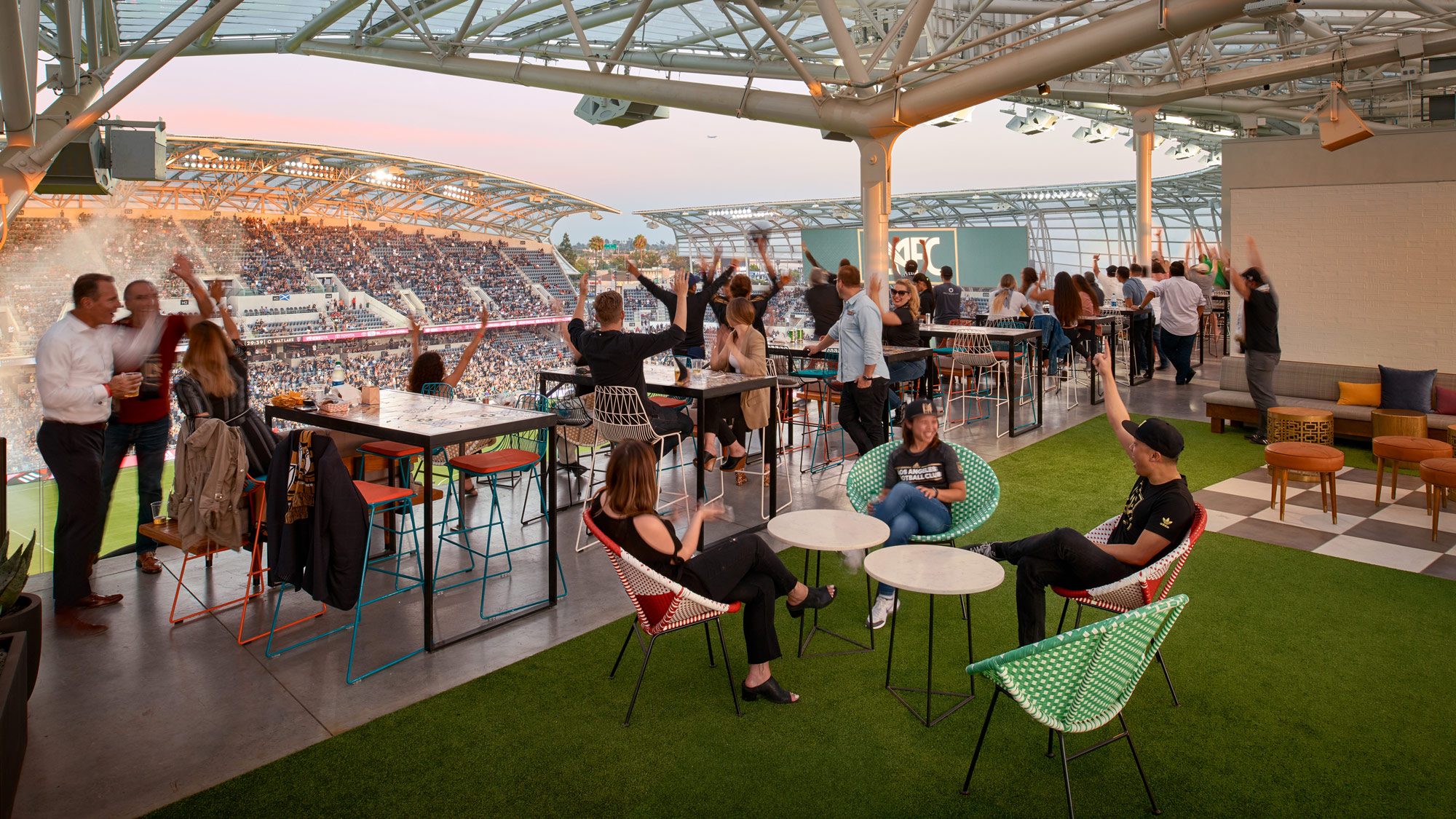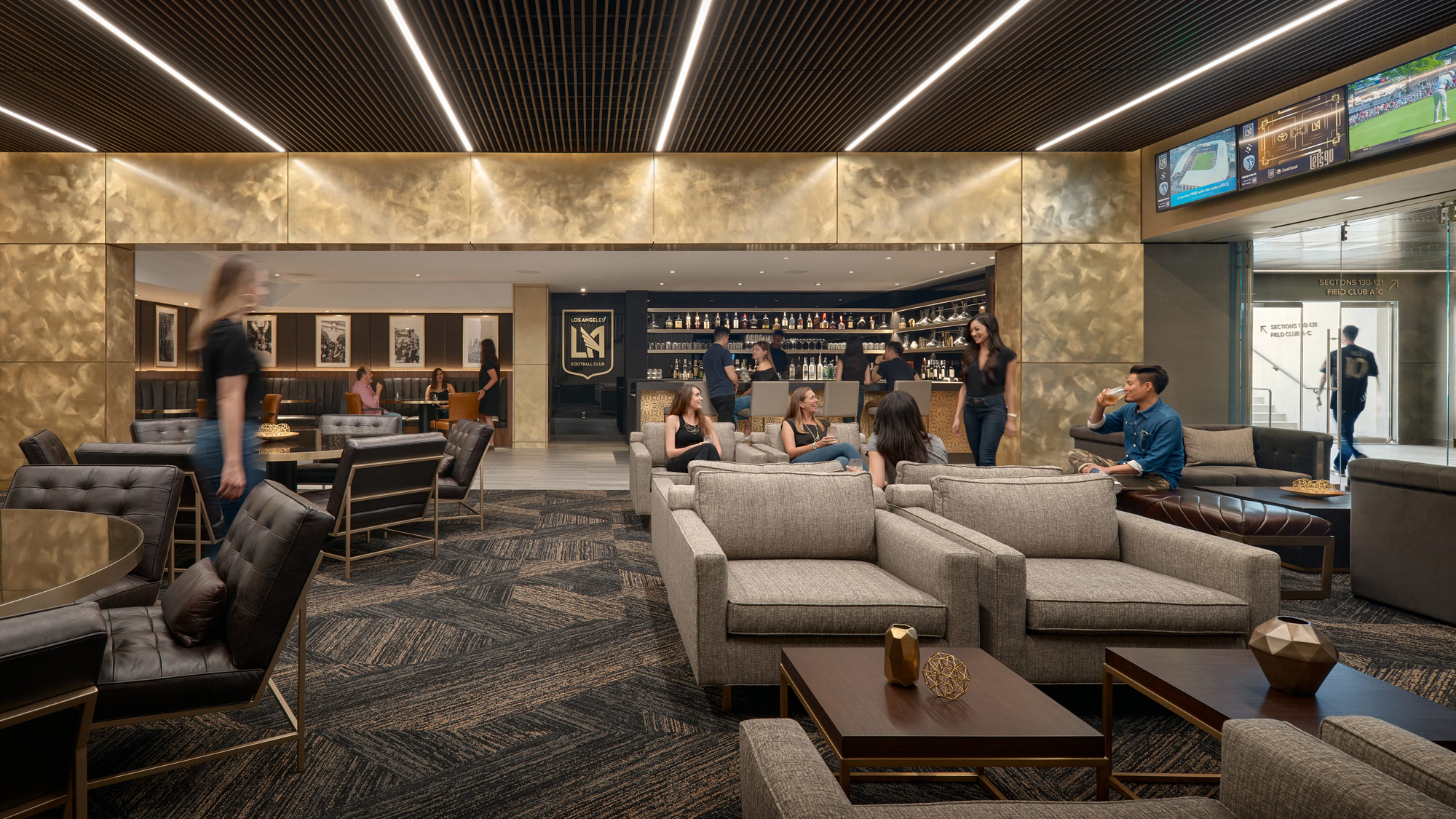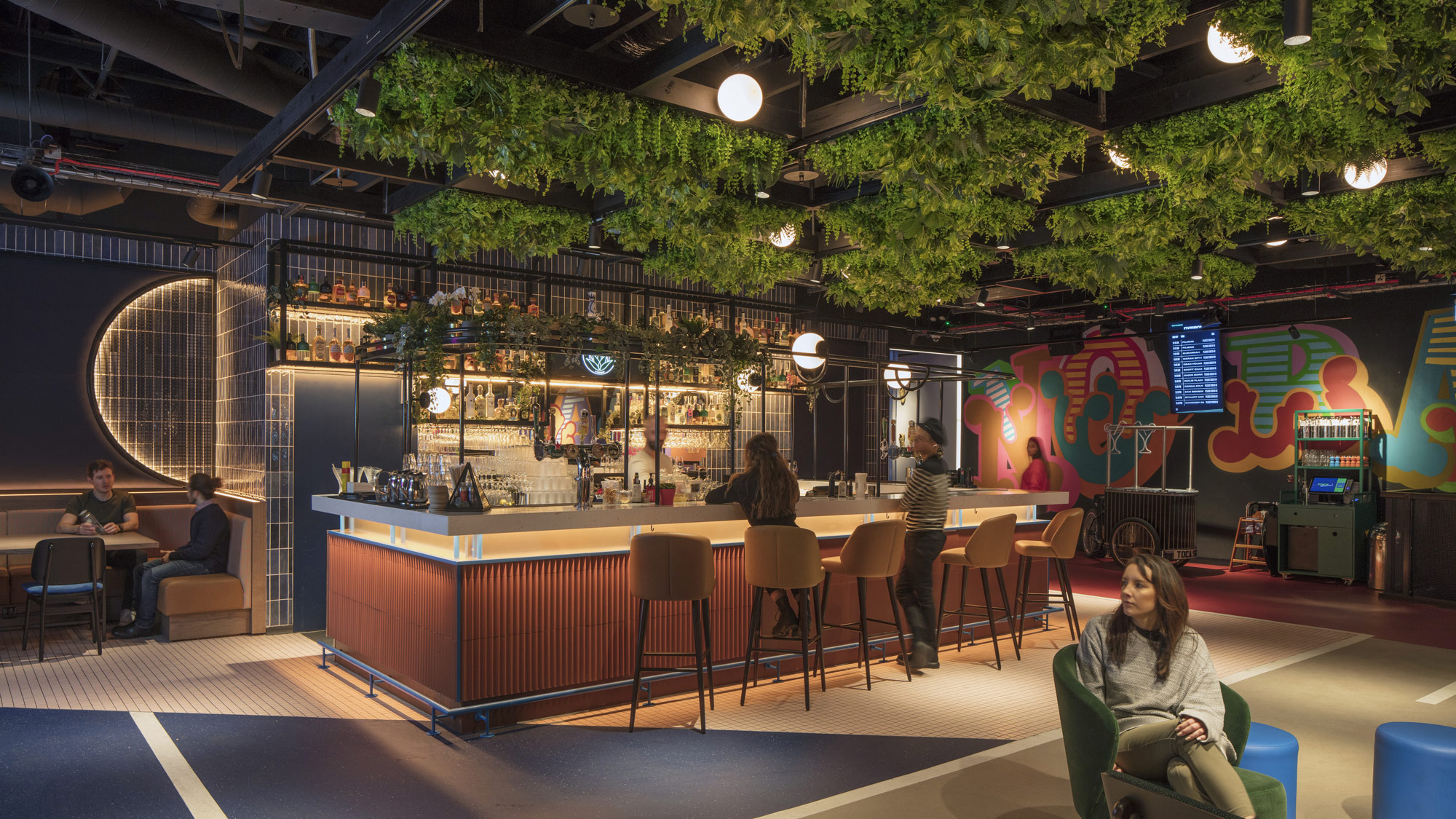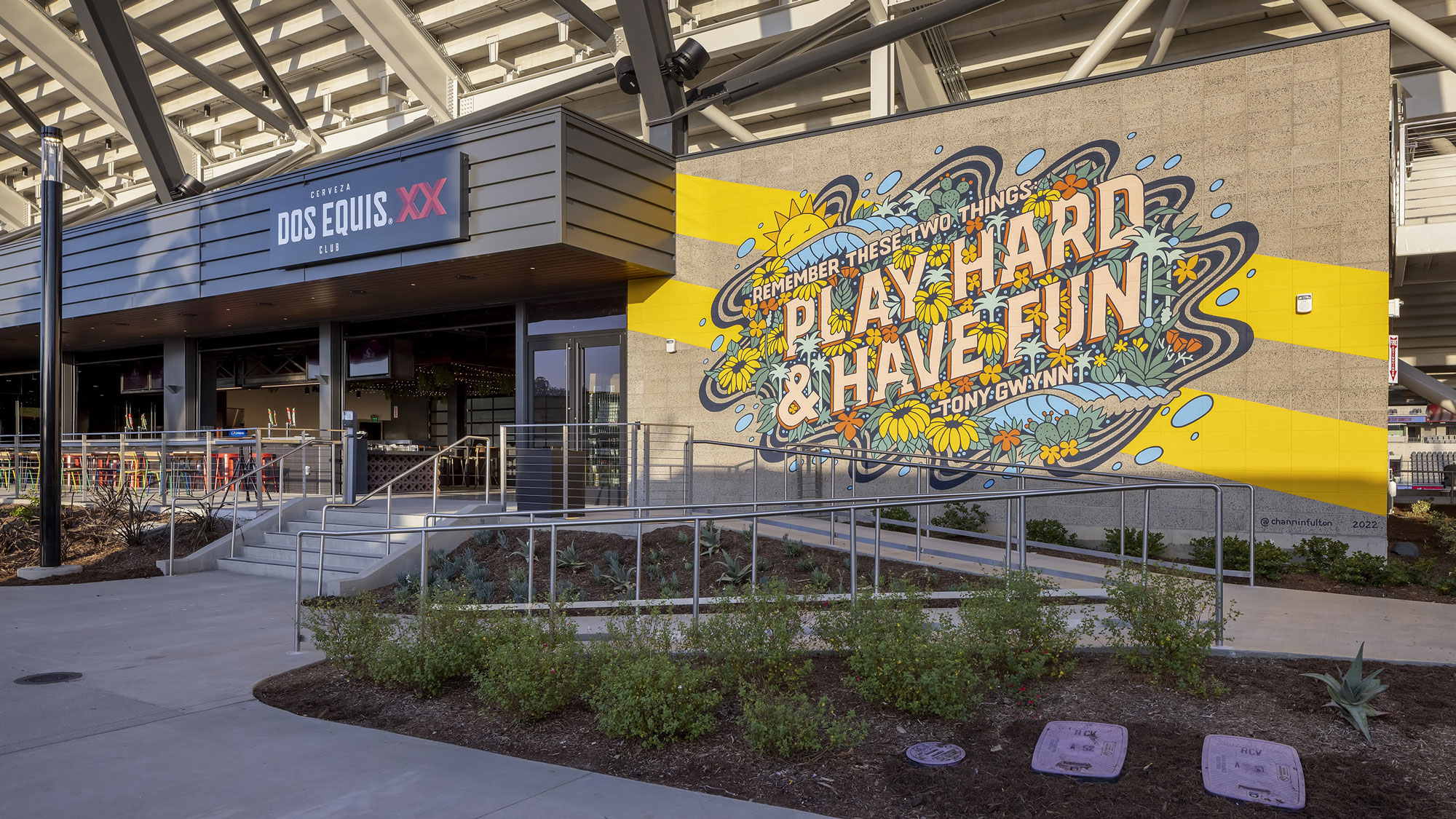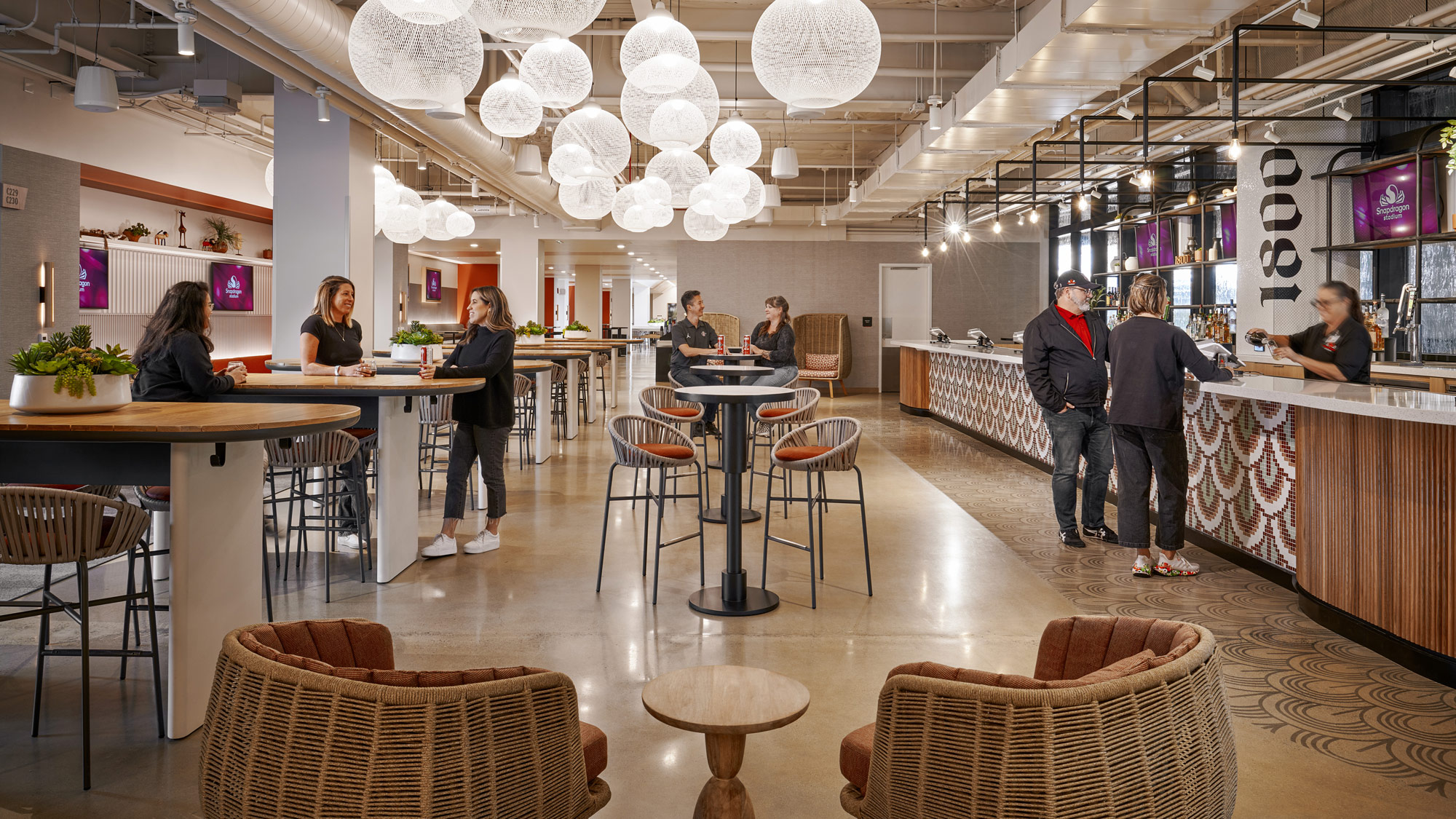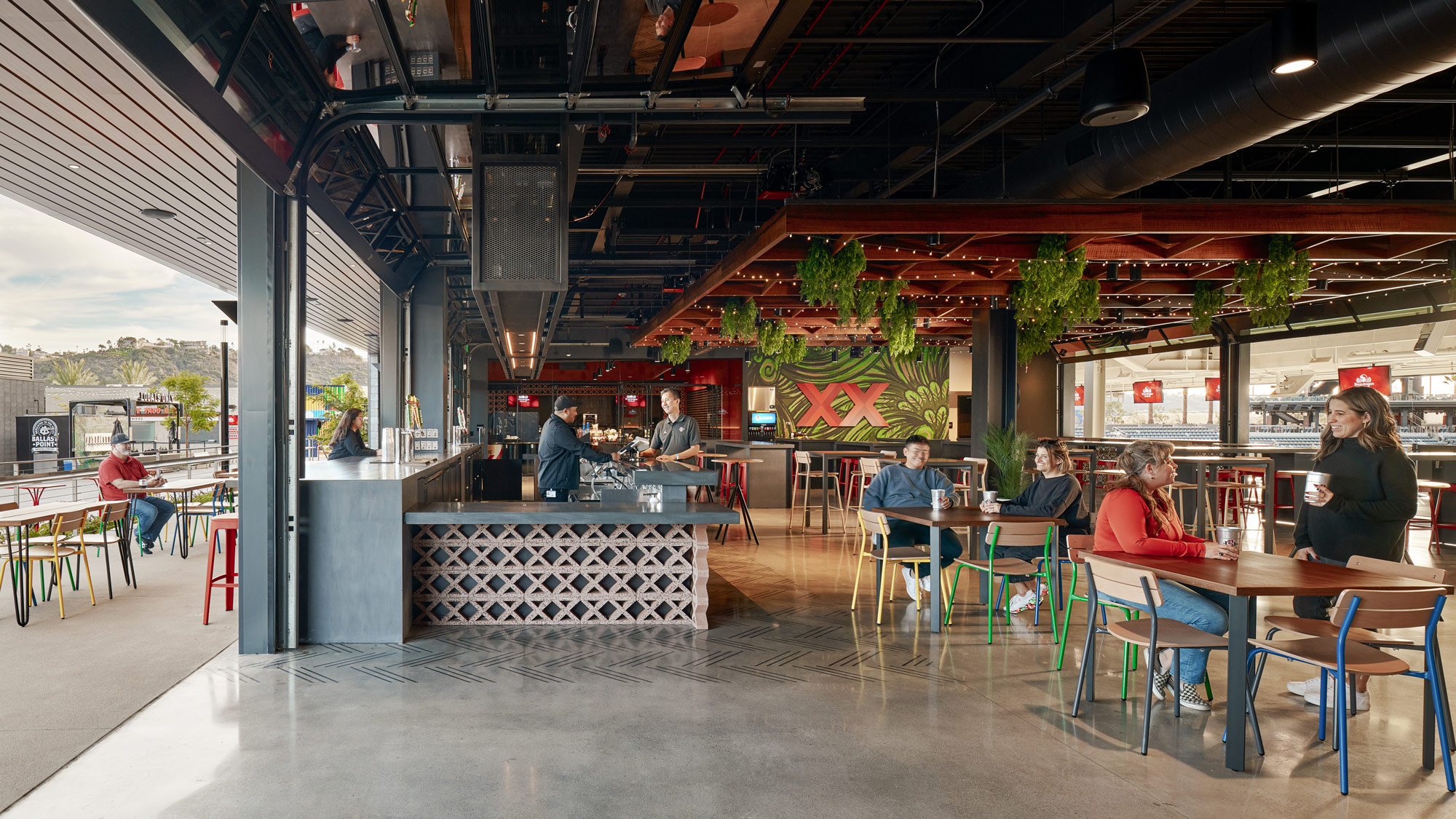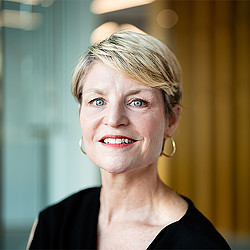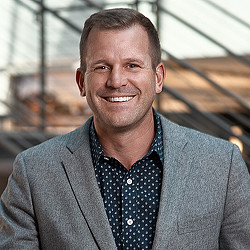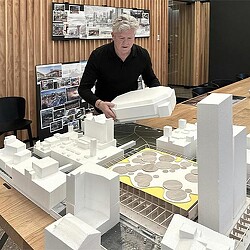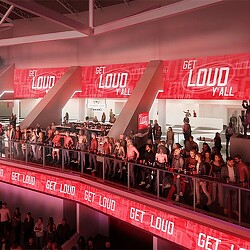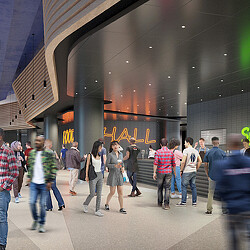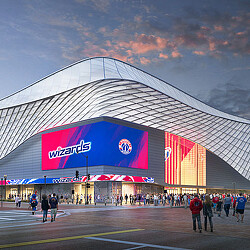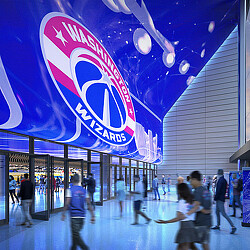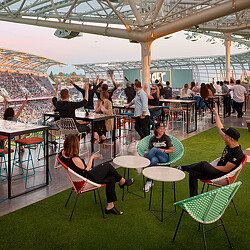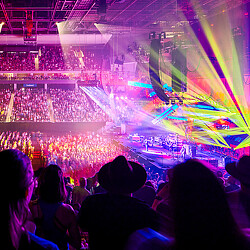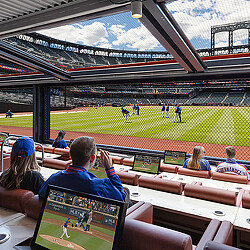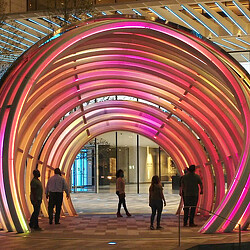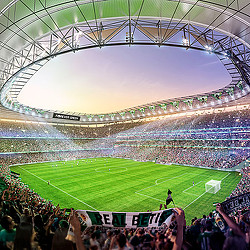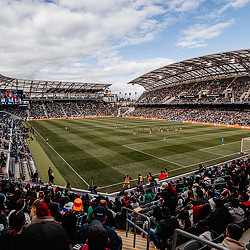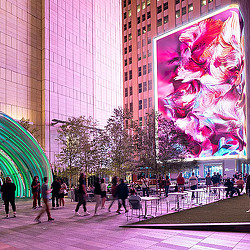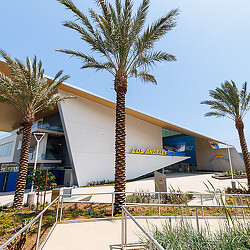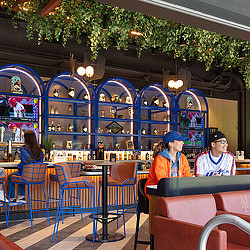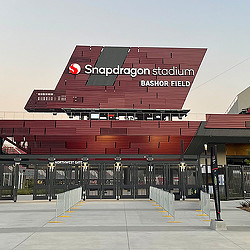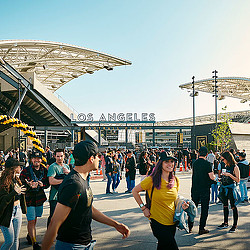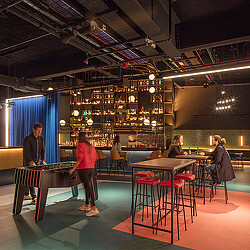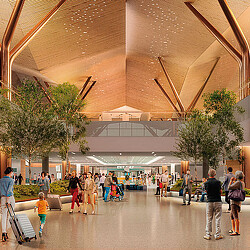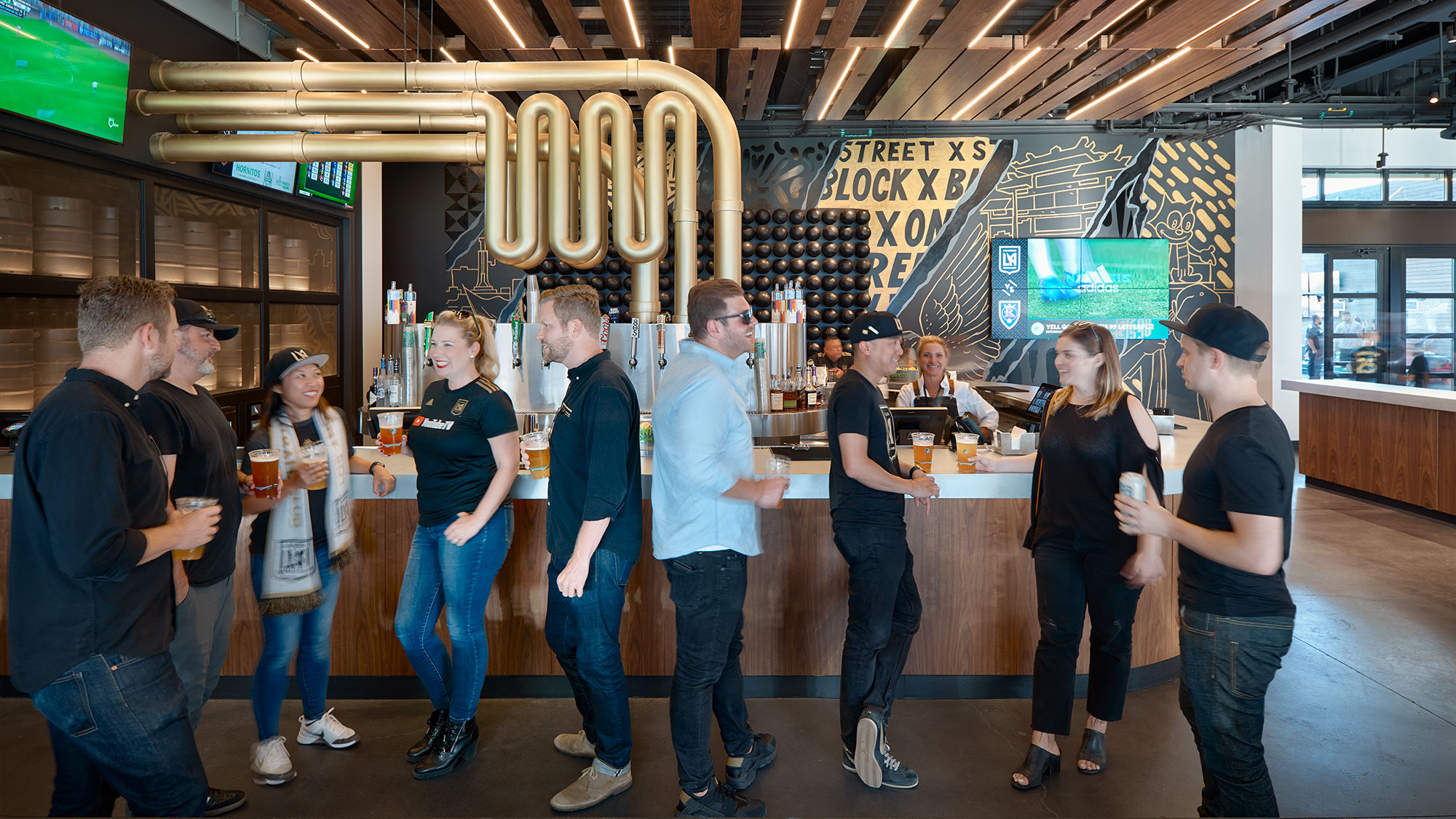
The Evolution of Sports Venue Brand Integration: From Simple to Sophisticated
At brand new stadiums or decades-old arena renovations, we’ve put a wide range of tools to work for brand expression, going beyond logos and color palettes to enhance architecture, support wayfinding, and amplify the live game experience in a lasting way.
Many of us wear our brand affinities like passions on our sleeve, whether it’s an embroidered bathrobe, I-was-there t-shirt, or coffee tumbler. Fewer brands become actual ink on your arm or ankle though — the tattoo that proclaims you’re a Yankee, a Wolverine, or a Capital for life. But nothing embodies fanaticism quite like a sports fan, who belongs to a community where brands are deeply emotional, passionately debated, and often inspire lifelong loyalty.
That’s the pinnacle of brand equity — and a state of mind that sports teams want to tap into at their arenas, stadiums, and team facilities. Brand isn’t an after-market layer in sports. It’s the heartbeat of loyalty and expanded engagement through season tickets, premium sales, VIP packages, merchandise, and more that equates to revenue.
We’ve watched the evolution of sports brand expression go from the modest banners of the 80s to today’s fully immersive and highly sophisticated venue experiences that change from game to game (and from game to concert to monster truck rally). Celebrating so many varying interests in one place provides a unique opportunity to elevate the visual landscape, leading to a range of brand activations well beyond previous generations of sports brand design.
But venue brand integration isn’t a simple exercise. It’s not about bombarding audiences with signs and screens. Whatever the team or venue, the best sports brand applications are brilliant assists. You feel the brand presence but it’s not the star player.
At brand new stadiums or decades-old arena renovations, we’ve put a wide range of tools to work for brand expression, going beyond logos and color palettes to enhance architecture, support wayfinding, and amplify the live game experience in a lasting way.
We’re making team logos and graphics less literal and expressing ideas like grit, strength, and speed in highly abstracted, artistic ways. Our designers are expanding the team’s own ideas about their brand identity system, creating new iterations that they can deploy in social media, direct marketing, and even merchandise to intensify fan engagement in and out of venue.
Elevating fan experiences throughout the venue
Every sports team is looking to provide the game experience at multiple price points from lower-cost specials to extravagant premier suites and in-between. We adjust our brand approach to the demands and opportunities in these areas, adding durability for the highly-trafficked general seating and circulation areas and increasing the hospitality quotient in suites and premium areas.
In general seating, we focus on big graphic punch with high durability, using high-performance paints that can withstand the weather at outdoor venues. We use higher-quality fabrics and finishes in a suite, integrating subtle touches through etched wood or metals, embroidered and textured fabrics, and custom fixtures. And don’t forget the bathrooms!
Aligned brand partnerships, especially with local companies, can offer elevated fan experiences that drive awareness and affinity for both organizations. As venues become more sophisticated, sponsors are deepening relationships with fans through unparalleled VIP experiences, such as exclusive experiential entryways for cardholders or member groups that get VIPs close to the action faster than ever before.
Teams and sponsors are extending the game day experience with interactive activations that bring fans closer to the game and to the team brand. In-stadium venues for “competitive socializing” leverage technology to create social gaming concepts that engage fans and extend their stay before and after the event. TOCA Social is a great example within London’s iconic O2 stadium, containing bespoke interactive games alongside dynamic social spaces, selfie booths, and bars. These venues appeal to wide audiences and add value with branded programming and VIP customization.
But let’s face it, fans are coming to the gates to get unparalleled access to their favorite team, the players, and to have their “I was there when...” moments, and we are seeing teams lean into that in big ways. We’ve created new fan hype tunnels that put players’ epic entrances right inside VIP areas on their way to the field. Field metrics and replays powered by Augmented Reality overlays put you inside the action at larger-than-life scale. We’re also making multisensory immersive experiences that celebrate scoring, new records, or just the end of the half with interactive lighting and rumble seats.
To create seamless experiences that allow fans to spend more time watching versus waiting, venues are activating real-time wayfinding through smart applications. Technology integration allows operators to drive fans toward different amenities in the stadium, supporting easier entry, crowd control, and incentivized purchases, while also sharing valuable fan data back to the team.
Using the city to inspire fan loyalty
City presence in a sports venue’s brand strategy is a great contributor to the fan loyalty equation. Legacy teams are inextricably intertwined with a city fabric, while new franchises can arouse a surprisingly loud rally cry of civic attachment.
Snapdragon Stadium in San Diego is a good example. Here, we transformed a former NFL facility into a shared venue for NCAA football and a new women’s soccer league team. To create a new life for new tenants, we looked to the story of the city and the site itself for inspiration, working with the city’s historian to surface content and artifacts that spoke to “authentic San Diego.”
We featured superscale muralized walls with quotes from team legends, sculptural graphic lighting elements that pick up abstracted forms used in the team’s graphics, and a dynamic signage program that can be digitally updated for takeovers by a range of events. These unique elements help differentiate Snapdragon Stadium from other venues in the region.
In addition to live sports venues, a huge component of the sports ecosystem is athlete training. Our focus for performance and training centers is different, since our audiences are the athletes and staff who spend endless hours here doing weights, therapy, and preparation. We need to integrate the team brand in a more natural and meaningful way that speaks to their personal dedication and collective commitment.
Our recent work for the Los Angeles Chargers depicts this balancing of energy, fitness, and health. We proudly displayed sponsorships, leadership, players, team legends, and historic moments to not only deepen connections with fans, but to pay respect to the people who make it all possible.
The new landscape of brand in sports is more sophisticated than ever. There’s a demand for timelessness that calls for subtlety and restraint. As designers, it’s incredibly exciting and challenging to hit the notes of excitement and passion without going overboard. The result is something more timeless and lasting — just like that championship tattoo.
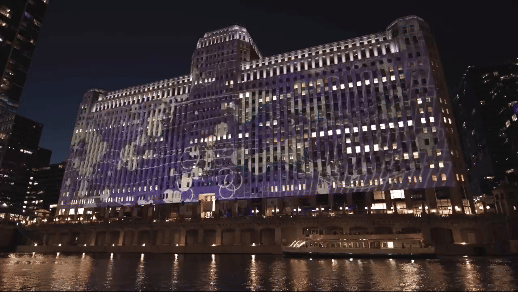
For media inquiries, email .
